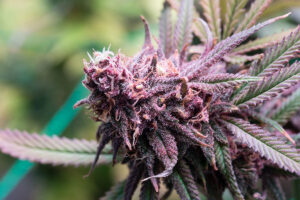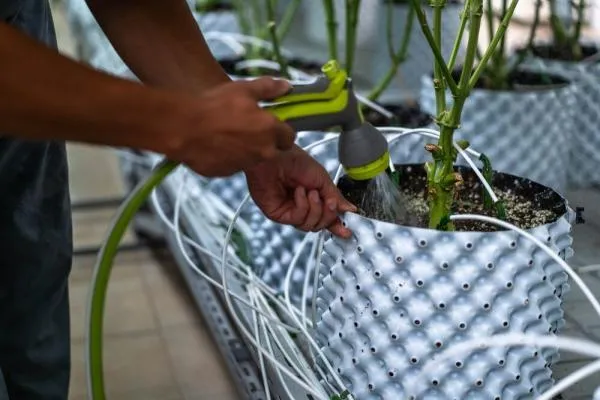Everyone loves purple weed. It looks great and tastes incredible. In fact, many people even pay more for purple buds. But it’s not just good for consumers. Growers also enjoy the opportunity to showcase their skills by cultivating purple strains. Nothing is more striking than a room full of purple plants, and growing purple weed is an excellent way to impress your friends and fellow growers. But how do you grow weed with those beautiful purple flowers? Before getting started, it’s helpful to understand what makes cannabis plants turn purple.
Why Do Cannabis Plants Turn Purple?
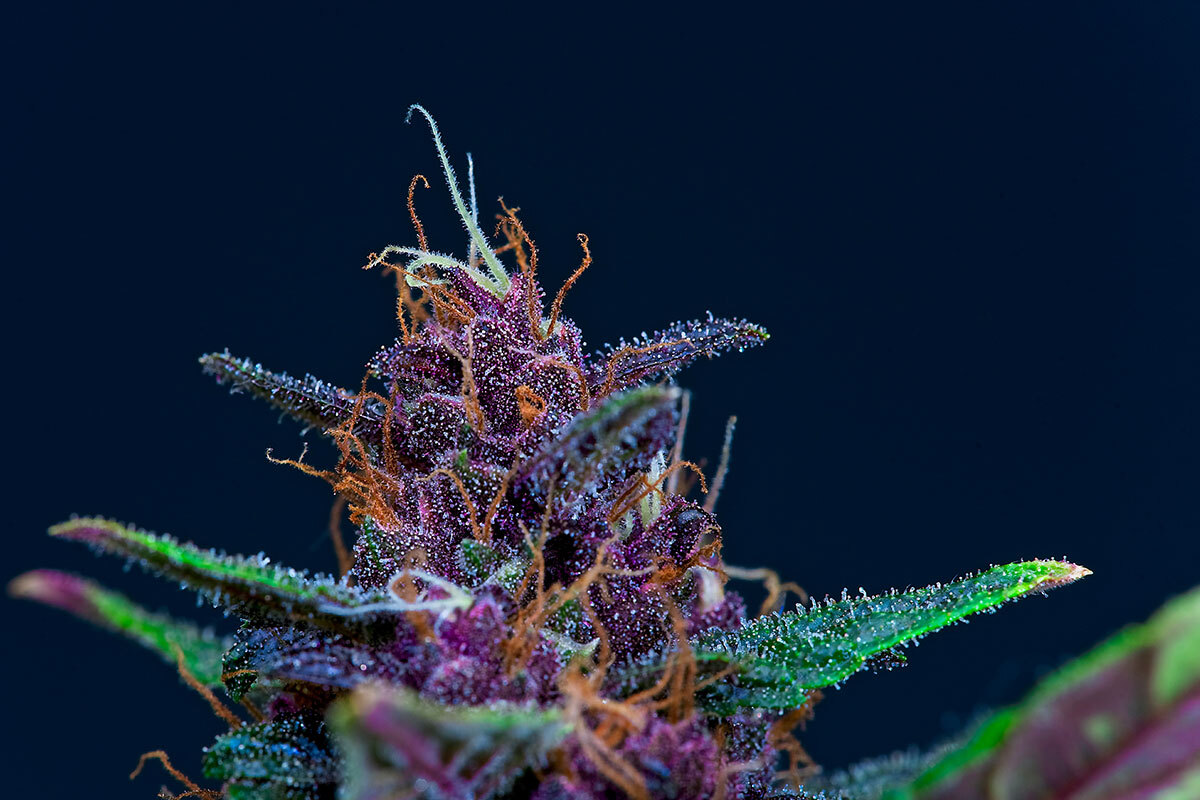
All plants contain pigments that convert light into energy during photosynthesis. The most common is chlorophyll. It absorbs all visible wavelengths of light except the color green, hence the predominantly green coloring of most plants. But plants use a variety of other pigments too. For instance, the pigment anthocyanin protects against heat stress and UV-B rays. And unlike chlorophyll, it absorbs all wavelengths of light except those on the indigo spectrum. When anthocyanin is the dominant pigment in a plant, the plant develops purple coloring. Many plants produce purple leaves, flowers and stems, including a wide range of purple weed strains.
Which Parts of the Plant Turn Purple?
But it’s not simply a case of high anthocyanin levels causing an entire plant to turn purple. There are many different parts of a cannabis plant. Which of them turns purple varies from strain to strain and depending upon the growing conditions. Only some parts of the plant affect the final color of the buds.
Pistils
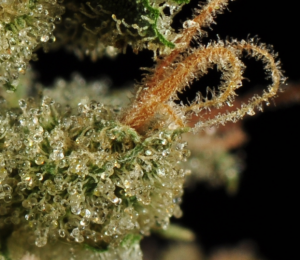
Pistils are the reproductive parts of female plants that collect pollen from male plants. You’ll notice them as small hairs that protrude from the buds. Pistils often grow in shades of orange and brown, though they can turn pink and purple. Some of this color remains after drying and curing, though the dominant color will be that of the buds beneath them.
Calyxes
Cannabis buds are comprised of hundreds of calyxes. As such, the color of your calyxes is largely the color of your buds. Plants with just a few purple calyxes produce buds with a pleasing tint. Grown in the right conditions, some purple strains yield buds where every calyx is colored, giving you deep purple weed that’s vibrant even after grinding.
Trichomes
Trichomes tend to change from clear to white, finally becoming amber-colored towards the end of the harvesting window. But certain strains produce trichomes with a satisfying purple or pink sheen.
Leaves
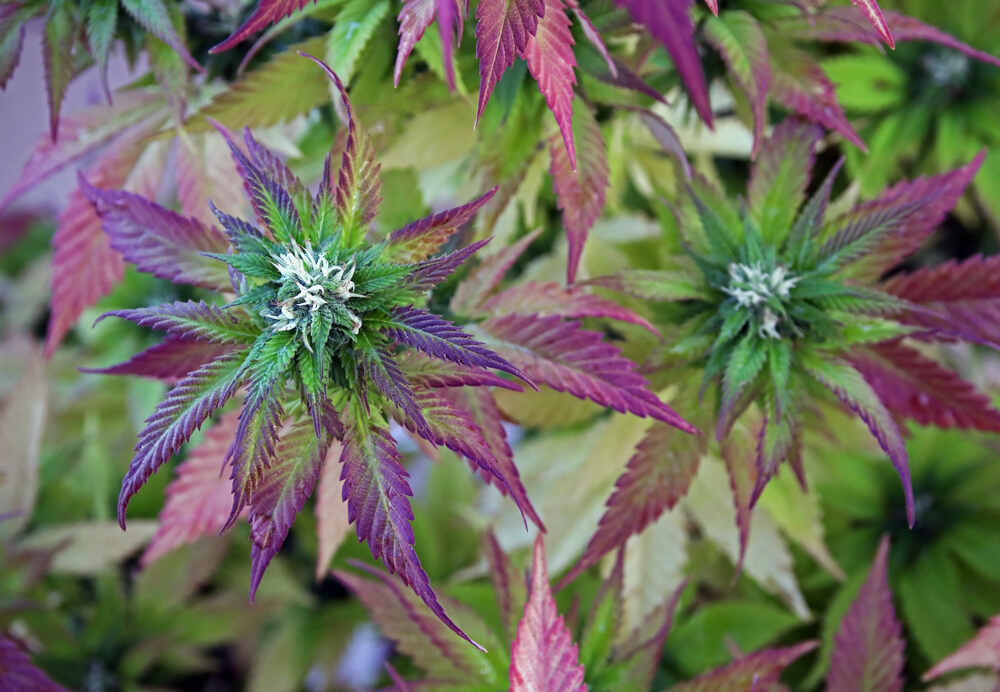
Fan leaves and sugar leaves can also turn deep shades of purple. In some cases, leaves turn purple while buds stay green. In others, the entire plant develops intense purple hues. The visual effect is incredibly striking; plants with purple leaves look truly beautiful pre-harvest. However, it’s worth noting that most of this beauty will be lost in the trimming process. Purple leaves are attractive but have little impact on the color of your buds.
How to Grow Purple Weed
Growing purple weed is actually quite simple. The growing process is exactly the same during the seeding and vegetation phases, requiring only slight tweaks as plants flower. But first, you must consider genetics. If you want to grow weed with purple flowers, you must start with the right strain.
Focus on Genetics
The tendency of plants to produce colorful buds is almost entirely genetic. While there are certain techniques you can employ during the growing process to enhance these tendencies, you cannot cause any cannabis plant to change color. Thankfully, there are many verities that have been carefully bred to produce purple cannabis strains.If you want purple buds, look for strains that produce purple calyxes and pistils. As buds will naturally lose some vibrancy during the drying and curing processes, it’s worth seeking strains known for high levels of color-penetration. Specialized strains such as Tropicana Cookies Purple, Purple Hulk Auto and the delightfully fruity Purple Afghani are good places to start.
The world-famous Granddaddy Purps, renowned for its potency, is also worth a special mention. The indigo light not absorbed by anthocyanins is the part of the light spectrum that provides most energy. Consequently, cannabis plants that are high in anthocyanins may not grow to their maximum potential, and may therefore be less potent. Purple strains like Granddaddy Purps and its parent strain Purple Urkle have been expertly developed to produce attractive, colorful plants without sacrificing potency.
Once you’ve chosen one of the specialized purple weed strains, there’s just one technique you need to employ in order to harness its genetics:
Manipulate the Temperature
As mentioned, when growing purple weed, follow the normal growing process until the flowering phase. Then it’s simply a case of lowering the temperature of your growing environment at night. This intermittent temperature reduction slows chlorophyll production, encouraging an increase in anthocyanin levels.
The temperature should be reduced by roughly 10-15°F, shifting from around 75-80°F in the day to 65-70°F at night. Be patient and don’t overdo it. Though night-time temperatures must be reduced as soon as plants begin flowering, it normally takes around two weeks for them to change color. Resist the urge to lower the temperature further, as this can disrupt maturation and damage your plants. Plants exposed to temperatures below 50°F will often suffer reduced yields and may even die.
This process requires care. Once your plants have started to change color, it’s possible to return to normal night-time temperatures. Given the risk of shocking your plants and stunting their growth, you may wish to limit their exposure to colder temperatures. Use discretion and don’t feel obliged to lower the night-time temperature for the entire duration of the flowering phase.
The need for precise temperature controls means this technique is only suitable for indoor growing. However, outdoor growers in many climates will find this effect is naturally produced if they cultivate their plants in the spring and summer.
What Not to Do!
- Increase Nitrogen Levels
It’s a common misconception that you can turn your plants purple by feeding them extra nitrogen. Don’t do it. It won’t turn them purple, but it may result in nutrient burn. Similarly, reducing their phosphorous intake is also unhelpful. - Deprive Your Plants of Air
Another fallacy is that you can turn cannabis plants purple by depriving them of oxygen or carbon dioxide. This is not true. What’s more, plants need air to live. Cut off their supply and they’ll stop growing and eventually die. - Add Artificial Dye
Once again, a plant’s color is determined largely by its genetics. Artificial dyes won’t give you beautiful purple plants. But they will add a load of unwanted toxins. - Mess With the Growing Process
Factors like light-cycle, watering schedule and growing medium also have no impact on whether a plant turns purple. Similarly, flushing your plants with ice water will not enhance their chances of changing color.
Besides not working, techniques such as these can lead to unhealthy plants. And unhealthy plants mean decreased yields with low-quality buds. If you want weed with purple flowers, just pick a purple strain and do the simple things right.
To Sum It Up
So there you have it. Growing beautiful weed with purple flowers is easy, provided you follow two simple steps. First, choose one of the many great purple strains out there. And second, make one subtle change to the growing process; a few temperature tweaks during the flowering phase is all it takes. Whether you want to impress other growing aficionados or just wish to try something different, growing purple weed is a fun and truly rewarding pursuit.
